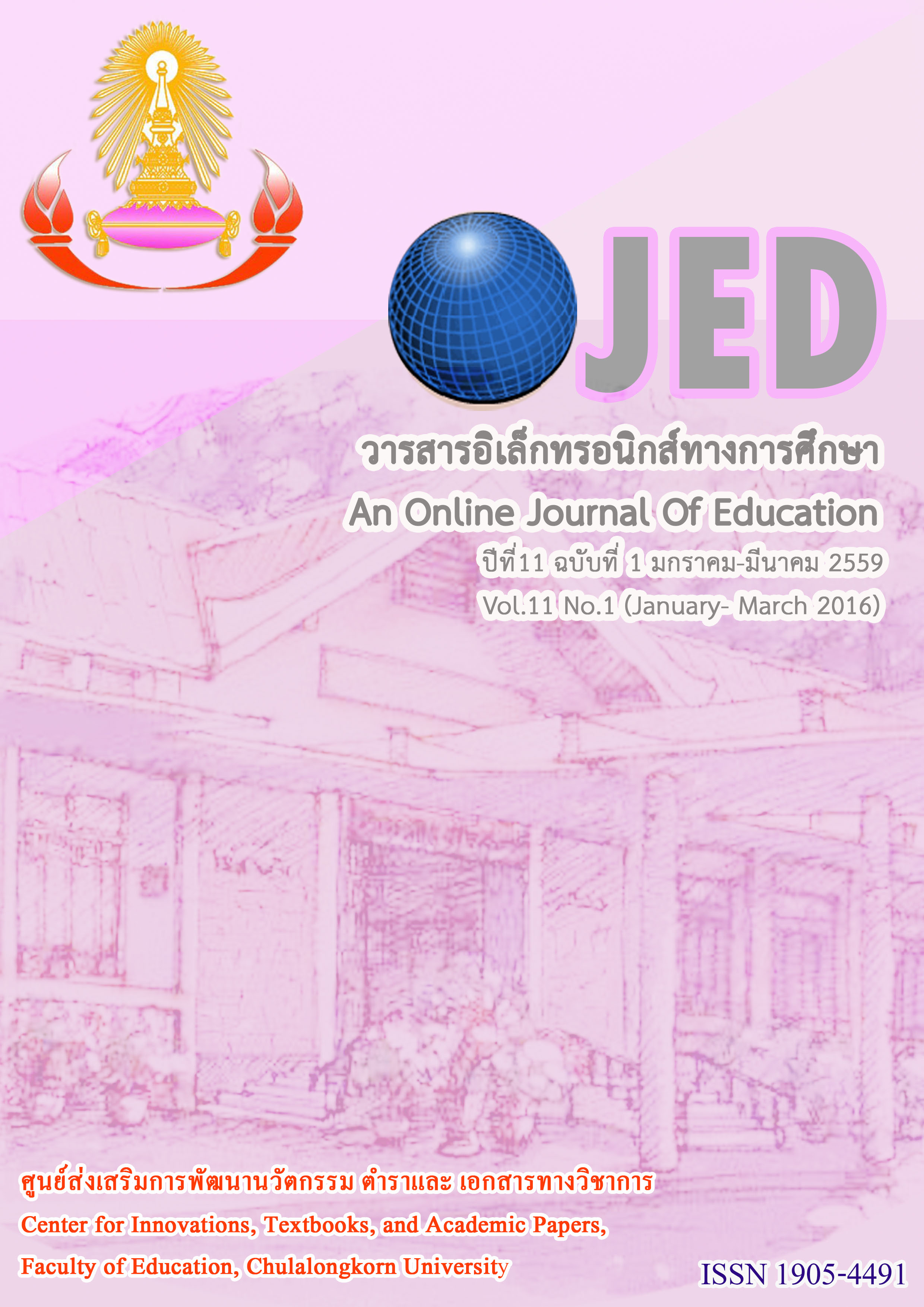ผลของการจัดกิจกรรมการเรียนรู้คณิตศาสตร์โดยใช้กระบวนการ RMT ร่วมกับแนวคิดการเสริมต่อการเรียนรู้ที่มีต่อมโนทัศน์และความสามารถในการแก้ปัญหาทางคณิตศาสตร์ของนักเรียนชั้นมัธยมศึกษาปีที่ 3 RESULTS OF ORGANIZING MATHEMATICS LEARNING ACTIVITIES BY USING RIGOROUS
Keywords:
กระบวนการ RMT, แนวคิดการเสริมต่อการเรียนรู้, มโนทัศน์ทางคณิตศาสตร์, ความสามารถในการแก้ปัญหาทางคณิตศาสตร์, RMT PROCESS, SCAFFOLDING APPROACH, MATHEMATICAL CONCEPTS, MATHEMATICAL PROBLEM SOLVINGAbstract
การวิจัยในครั้งนี้มีวัตถุประสงค์เพื่อศึกษาผลการจัดกิจกรรมการเรียนรู้โดย 1) เปรียบเทียบมโนทัศน์ทางคณิตศาสตร์ของนักเรียนที่ได้รับการจัดกิจกรรมการเรียนรู้คณิตศาสตร์โดยใช้กระบวนการ RMT ร่วมกับแนวคิดการเสริมต่อการเรียนรู้กับเกณฑ์ร้อยละ 60 และเปรียบเทียบความสามารถในการแก้ปัญหาทางคณิตศาสตร์ก่อนเรียนและหลังเรียน 2) เปรียบเทียบมโนทัศน์และความสามารถในการแก้ปัญหาทางคณิตศาสตร์ของนักเรียนกลุ่มที่ได้รับการจัดกิจกรรมการเรียนรู้คณิตศาสตร์โดยใช้กระบวนการ RMT ร่วมกับแนวคิดการเสริมต่อการเรียนรู้กับกลุ่มที่ได้รับการจัดกิจกรรมการเรียนรู้แบบปกติและ 3) ศึกษาพัฒนาการของความสามารถในการแก้ปัญหาทางคณิตศาสตร์ของนักเรียนที่ได้รับการจัดกิจกรรมการเรียนรู้คณิตศาสตร์โดยใช้กระบวนการ RMT ร่วมกับแนวคิดการเสริมต่อการเรียนรู้ กลุ่มตัวอย่างที่ใช้ในการวิจัยคือนักเรียนชั้นมัธยมศึกษาปีที่ 3 โรงเรียนสมุทรสาครบูรณะ จ.สมุทรสาคร จำนวน 93 คน เครื่องมือที่ใช้ในการวิจัยคือ แบบวัดมโนทัศน์และแบบวัดความสามารถในการแก้ปัญหาทางคณิตศาสตร์ เครื่องมือที่ใช้ในการทดลองคือ แผนการจัดกิจกรรมการเรียนรู้โดยใช้กระบวนการ RMT ร่วมกับแนวคิดการเสริมต่อการเรียนรู้ และแผนการจัดกิจกรรมการเรียนรู้แบบปกติ วิเคราะห์ข้อมูลโดยหาค่าเฉลี่ยเลขคณิต ส่วนเบี่ยงเบนมาตรฐาน การทดสอบค่าที (t-test) เทคนิคการวิเคราะห์ความแปรปรวนร่วม (ANCOVA) และการวิเคราะห์เชิงเนื้อหา (Content analysis)
ผลการวิจัยสรุปได้ดังนี้ 1) นักเรียนกลุ่มทดลองมีมโนทัศน์ทางคณิตศาสตร์สูงกว่าร้อยละ 60 และมีความสามารถในการแก้ปัญหาทางคณิตศาสตร์หลังเรียนสูงกว่าก่อนเรียน อย่างมีนัยสำคัญทางสถิติที่ระดับ .05 2) นักเรียนกลุ่มทดลองมีมโนทัศน์และความสามารถในการแก้ปัญหาทางคณิตศาสตร์สูงกว่านักเรียนกลุ่มควบคุม อย่างมีนัยสำคัญทางสถิติที่ระดับ .05 3) นักเรียนกลุ่มทดลองมีพัฒนาการความสามารถในการแก้ปัญหาทางคณิตศาสตร์ดีขึ้น
The objectives of this research were threefold: 1) to compare the mathematical concepts of ninth grade students learning by using the RMT process and scaffolding approach, and compare their mathematical problem solving abilities before and after learning, 2) to compare mathematical concepts and mathematical problem solving abilities of ninth grade students between learning groups by using the RMT process and scaffolding approach and conventional approach, and 3) to study the development of mathematical problem solving abilities of students by using the RMT process and a scaffolding approach. The subjects were 93 ninth grade students of Samut Sakhon Burana. The instruments for data collection were as concept tests and mathematical problem solving abilities tests. Data were analyzed by arithmetic mean, standard deviation, t-test, ANCOVA, and content analysis.
The results of the study revealed that 1) the mathematical concepts of ninth grade students by using the RMT process and scaffolding approach were higher than 60 percent and mathematical problem solving abilities after learning were statistically higher than those before at a .05 level of significance, 2) the mathematical concepts and mathematical problem solving abilities of ninth grade students by using the RMT process and a scaffolding approach were higher than those of students learning by using a conventional approach at a .05 level of significance, and 3) students using the RMT process and a scaffolding approach had gradually improved mathematical problem solving abilities.




